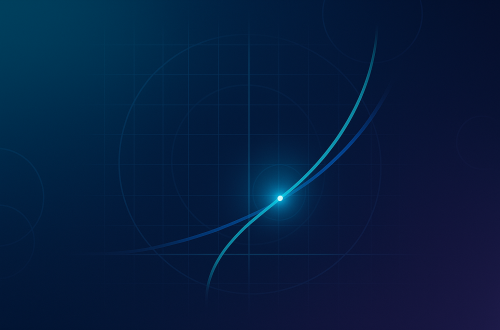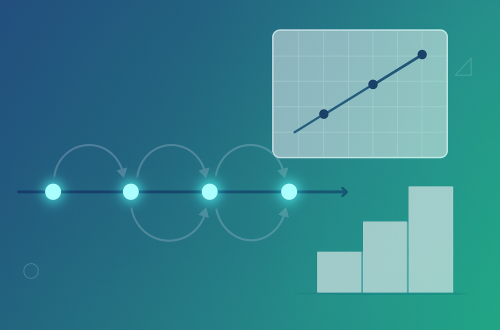Mathematics, at its core, is a universal language of logic, patterns, and relationships. Yet the way it is commonly taught often narrows that universe into a predictable routine: quadratic equations, Pythagoras’ theorem, and the standard rules of differentiation and integration. While these fundamentals are undeniably essential, there exists another world of mathematical beauty — a collection of “hidden gems,” lesser-known formulas that rarely appear in school textbooks but play a profound role in higher mathematics, engineering, and applied sciences. These are the formulas that lie quietly between the lines of more familiar equations, connecting geometry with physics, algebra with art, and logic with the structure of the universe.
This essay explores several of these underappreciated mathematical treasures: spatial geometry relationships, inversion transformations, Laplace transforms, and a few surprising connections across fields. Understanding them not only expands one’s technical toolkit but also deepens appreciation for the elegant architecture of mathematics itself.
Beyond the Plane: Geometry in Three Dimensions
High school geometry tends to focus primarily on two-dimensional shapes—triangles, circles, and polygons. But as soon as we enter the three-dimensional world of engineering, architecture, or even computer graphics, new relationships emerge that are rarely introduced in basic education.
One such example is the scalar triple product, a compact formula that determines the volume of a parallelepiped formed by three vectors a, b, and c:
While this may look intimidating at first, it elegantly captures spatial relationships. It tells us that volume can be understood as the projection of one vector onto the area defined by two others. In practical applications, this formula helps calculate volumes of 3D structures, model molecules, or even determine torque in mechanical systems.
Another underrated geometric formula is the distance from a point to a plane:
Here,
,
, and
define the orientation of the plane, while
represents the point. This expression is fundamental in computer vision, robotics, and navigation — fields that depend on spatial awareness and geometric reasoning.
Spatial geometry formulas often appear abstract to students who haven’t yet seen their application. Yet they underpin everyday technologies: GPS systems use vector geometry to triangulate position, and 3D modeling software relies on transformations and spatial distances to render lifelike environments. Understanding these relationships opens the door to seeing mathematics not as abstract calculation but as a living, creative system.
Mathematical Inversion: Transforming the World Around a Circle
Among the more elegant concepts in geometry lies the inversion formula—a transformation that flips points inside and outside a circle while preserving angles. This concept, often overlooked in high school geometry, is expressed through the formula:
where
is the center of the circle,
is its radius,
is the original point, and
is its image after inversion.
Inversion acts like a mathematical mirror: it turns complex geometric configurations into simpler ones and vice versa. Circles can transform into lines, lines into circles, and complicated intersections can become symmetric and solvable. Though it may sound like a purely theoretical curiosity, inversion has practical uses in electromagnetism, optics, and complex analysis, where it simplifies field equations and boundary conditions.
For example, in electrostatics, when dealing with conductors of circular symmetry, inversion can transform difficult potential problems into solvable ones. Similarly, in art and computer graphics, inversion is part of the mathematics behind image warping, distortion correction, and lens modeling. It shows that even an abstract formula can shape how we see and interact with the visual world.
In a broader sense, inversion invites philosophical reflection: it demonstrates how a change of perspective — flipping a system inside out — can make complex problems simple. This principle echoes across scientific inquiry, where transformations often lead to new insights.
Laplace Transform: Bridging the Worlds of Algebra and Calculus
The Laplace transform is another hidden mathematical treasure that rarely makes its way into general education despite its immense power in applied fields. Its formula is deceptively simple:
At first glance, this looks like an advanced calculus concept, but its purpose is beautifully intuitive. The Laplace transform converts a time-domain function (a signal that changes over time) into a frequency-domain representation — essentially translating calculus problems into algebraic ones.
In engineering and physics, it allows systems governed by differential equations (such as electrical circuits or population models) to be analyzed more easily. What makes it so powerful is not just its mathematical elegance but its conceptual bridge between continuous change and static relationships. It demonstrates that understanding a system from multiple representations can make it more manageable and interpretable.
Laplace’s idea resonates far beyond mathematics. It reflects a central cognitive strategy: when faced with a complex, dynamic process, find a new lens—a transformation—that simplifies and clarifies. Whether analyzing sound waves, predicting motion, or modeling social systems, the Laplace transform embodies the philosophy of problem-solving through abstraction.
Hidden Patterns in Familiar Systems
There are countless other lesser-known formulas that reveal profound structures within seemingly simple systems. The Euler–Maclaurin formula, for instance, connects discrete sums and continuous integrals:
This formula plays a key role in numerical analysis, where it bridges the gap between calculus and computation — an essential idea for digital simulations and data science.
Similarly, the Cauchy–Riemann equations in complex analysis:
are fundamental for understanding how functions behave in the complex plane. Though often reserved for advanced courses, these equations lie behind technologies such as image processing, fluid dynamics, and aerodynamics. They describe how motion, energy, and flow maintain harmony through symmetry and constraint — a poetic manifestation of balance in mathematics.
Even the Gaussian integral, one of the most beautiful results in analysis:
is rarely discussed outside of calculus or probability theory, yet it is the cornerstone of statistics, describing how data naturally distributes around a mean. It reminds us that randomness itself follows structure — a concept essential to understanding uncertainty in both science and life.
Connecting the Formulas: Seeing the Whole Picture
These hidden formulas might seem unrelated at first glance — one describing geometry, another complex transformations, another integration — but they share a unifying theme: they connect realms. Each formula represents a bridge between two worlds: space and algebra, discrete and continuous, real and imaginary. Recognizing these connections is what transforms a student of mathematics into a thinker who sees the language of relationships behind the numbers.
To illustrate how these formulas relate in practice, consider the table below, which summarizes their purpose and real-world application:
| Formula / Concept | Core Mathematical Idea | Example of Real-World Application |
|---|---|---|
| Scalar Triple Product | 3D vector volume | Computing torque, 3D modeling, molecular geometry |
| Point-to-Plane Distance | Spatial relationship | Robotics, navigation, architecture |
| Inversion Formula | Transforming geometric systems | Optics, electrostatics, image distortion correction |
| Laplace Transform | Converting time-domain to frequency-domain | Circuit analysis, control systems, vibration study |
| Euler–Maclaurin Formula | Connecting sums and integrals | Numerical integration, algorithm optimization |
| Cauchy–Riemann Equations | Linking real and imaginary functions | Fluid dynamics, aerodynamics, signal processing |
| Gaussian Integral | Probability and distribution structure | Statistics, data modeling, AI algorithms |
By exploring such relationships, students begin to see mathematics not as isolated facts but as a web of interconnected insights. Each formula is a doorway to understanding — not only the world of numbers but the world around us.
Why These “Hidden” Formulas Matter
So why should students, scientists, or even curious readers pay attention to these lesser-known mathematical gems? The answer lies in what they represent: depth, creativity, and universality. These formulas remind us that mathematics is not just about solving for x; it’s about seeing patterns in chaos, finding structure in uncertainty, and appreciating beauty in precision.
Learning advanced or uncommon formulas encourages a kind of mathematical maturity — the ability to recognize how concepts evolve and interlink. It fosters flexible thinking, creativity, and the confidence to approach unfamiliar problems. Moreover, in an age where technology can instantly solve basic equations, understanding deeper principles becomes a distinguishing skill. A calculator can find the area of a triangle; it cannot see the symmetry in an inversion or the elegance of a Laplace transformation.
Furthermore, these formulas have interdisciplinary importance. Engineers rely on Laplace transforms to design stable control systems. Architects use geometric relationships to model light and perspective. Physicists employ complex analysis to study motion and quantum systems. Even economists use mathematical transformations to predict trends and analyze uncertainty. Thus, learning them isn’t only an academic exercise—it’s preparation for thinking across boundaries.
Rekindling the Joy of Mathematical Discovery
For many learners, mathematics loses its magic when it becomes mechanical—when solving equations replaces curiosity. But encountering hidden formulas can reignite that curiosity. They reveal that the subject isn’t finished; there’s always more to uncover. The sense of wonder that accompanies discovering a new mathematical relationship mirrors the joy of uncovering a hidden truth about the universe.
One of the most rewarding aspects of mathematics is how it balances logic with beauty. The simplicity of a formula like
or the symmetry of inversion reminds us that even abstract ideas can carry aesthetic power. Each equation tells a story about how the world fits together, how opposites mirror each other, and how change can be understood through structure.
Encouraging students to explore beyond the curriculum — to learn about Laplace transforms, inversions, or Gaussian integrals — helps them see that mathematics isn’t static. It grows with them, offering new ways of seeing, reasoning, and creating. It becomes not just a tool but a worldview.
Conclusion
The “hidden gems” of mathematics—those rarely discussed but deeply powerful formulas—offer far more than computational shortcuts. They illuminate the underlying unity of mathematical thought, showing how geometry connects to physics, how algebra links to probability, and how transformation lies at the heart of all problem-solving. From the spatial elegance of vector geometry to the transformative power of Laplace and inversion, these concepts form the connective tissue of mathematical understanding.
Learning them isn’t about memorization—it’s about seeing. It’s about discovering that behind every formula lies a way of thinking that transcends the classroom. Whether one studies physics, art, engineering, or philosophy, these lesser-known equations provide tools not only for analysis but for imagination. They remind us that the true beauty of mathematics is not just in solving problems, but in revealing the hidden patterns of the universe.

